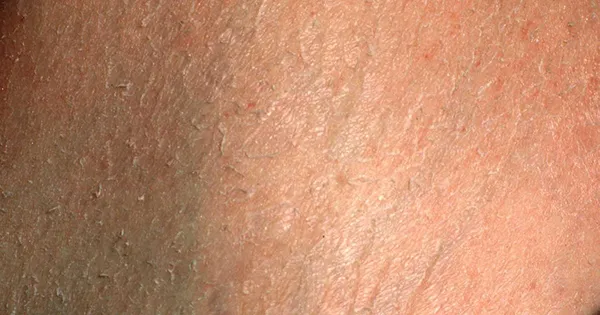In diabetes, alterations of lipid and glucid metabolism, small caliber blood vessels and neurological involvement may be associated with skin lesions.About 30% of patients may have skin manifestations related or attributable to their disease.
Dr. Ana Belén Cid Sánhez, a family doctor in Granada, Spain, provides us with important information, product of recent research.
First, it states that there are pharmacological aspects, which will be classified as related to metabolic alterations, with chronic degenerations or that they are simply more frequently associated with diabetes.
Diabetic patients have an increase in susceptibility to staphylococcal, coliform and pseudomonas infections.
Candida Albicans infection is also common.Piodermitis are more severe, such as forunculosis and more frequent erythrasma and dermatophytosis: Tiña Pedis (athlete foot) can cause bacterial oveffect that from place to gangrene and with it the loss of the limb.
Therefore, care is very important (risk increased by atherosclerosis and peripheral neuropathy), which must include regular care by a podiatrist, adequate footwear, meticulous washing with antiseptics, drying and application of emollients and early treatment of ulcers, blisters, Tiñas, etc ...
On the other hand, the ectima of the legs is a very rebellious, painful and usually extended injury.It begins being a varied vesicle containing serohematic fluid.Subsequently, a crusty injury is formed.It is extensive, it is rebellious and can cause other injuries that are sometimes confluent.
The germs found as a cause of infection are staphylococci and streptococci.The evolution of this lesion is extensive and can have an impact on the general state and the march of diabetes.Local treatment, antibiotic medication, dietary and medication media will be used to recover metabolic balance.
There are four processes that tend to interact specifically to diabetes: malignant otitis by aeruginosa pseudomcacio (it usually appears in the elderly and is characterized by intense pain of the ear, suppuration, fever and leukocytosis.
The tissues that surround the ear are swollen and very sensitive), rhinocerebral mucormycosis (it is a rare fungal infection that usually appears during or after an episode of diabetic ketoacidosis, begins abruptly with perior and periorbital swelling, pain, blood nasal secretionand increase in tearing.
The nasal mucosa and adjacent tissues become black and necrosan), cooling cholecystitis (tends to affect male diabetics, unlike the usual cholecystitis, which predominates in women. The diagnosis is made when discovering the presence of gas in theGallbladder wall in simple abdomen radiographs) and cooling pyelonephritis (characterized by gas finding in the kidney or perirrenal space).
Xantomatosis
The same as a series of normo or hyperliphemic processes characterized by the presence in the sparkling histiocyte dermies full of lipids in accumcles.
Eruptive xanthomas (yellowish dermal papules of & lAlcoholism or estrogen intake, and hyperlipoproteinemias i and v above all.They disappear with blood glucose control.
Manifestations for chronic degenerative complications
These are due to microangiopathi or an affectation ofsmall blood vessels.It is often associated with diabetes and in some cases there are genetic factors and changes in dermal connective tissue and cutaneous innervation.The same may happen like diabetic dermopathy or "bright spots."
These represent brown irregular, atrophic or scars depressed on the foot, with high edges, with scabs on their outside and central ulceration, asymptomatic in the anterior face of the legs.Some plates are sometimes distributed linearly.They disappear spontaneously after 12-18 months, but new ones continue to appear giving a stationary appearance.
It is thought that they are due to underlying microangiopathy or an affectation of small blood vessels.It is often associated with diabetes and in some cases there are genetic factors.It can affect several parts of the body, especially in the eyes (Diabetic retinopathy) or the kidneys (nephropathy).
It causes a bad blood supply that can lead to serious complications such as blindness or renal failure.There is no specific treatment.Especially important is the prevention of diabetes risk factors (obesity, alcoholism, arterial hypertension and sedentary lifestyle).It is the most frequent manifestation of diabetics.
Diabetic Bullosis
Which are expressed by subepidermal ampoules, tense on healthy skin that cure without 2-3 weeks.They are usually located on legs and feet and must be made differential diagnosis with autoimmune blister diseases.
Buschke Esclea Reeterum EscleaMerema)
It consists of a neck induration that quickly extends to the shoulders, the face and the upper part of the thorax.It produces limitation of joint mobility in the affected areas.Torpid Evolution.Histologically thickened collagen and glycosaminoglycan deposit can be seen.Persists for long periods of time.Differential diagnosis must be made with systemic sclerodermia.
Erythema and necrosis
Facial redness in long -evolving diabetics. The erysipelas in lower extremities that can end in necrosis and destruction of underlying bone.They are edematous and painless areas.


